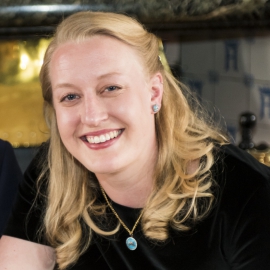Insights from the Collections
The Consortium's collections provide many opportunities to learn more about the history of epidemic disease.
Our cross-institutional search tool allows researchers to investigate materials across multiple institutions from a single interface. With more than 4.4 million catalog records of rare books and manuscripts, the Consortium's search hub offers scholars and the public the ability to identify and locate relevant materials.
Search the Consortium search hub.
Some archival materials related to this topic include:
Simon Flexner Papers, American Philosophical Society
Rufus Ivory Cole Papers, American Philosophical Society
Joseph Stokes, Jr. Papers, American Philosophical Society
Records of the International Health Board/International Health Division, Rockefeller Archive Center
Project Files FA386A, FA386B, FA387A, FA387B [Grant Records on yellow fever, malaria, influenza, tuberculosis, etc.], Rockefeller Archive Center
Purnell W. Choppin Papers, Rockefeller Archive Center
Learning from SARS, New York Academy of Medicine
Other Web resources:
Philadelphia Pandemic Preparedness Project from the College of Physicians of Philadelphia
Medicine and Madison Avenue from Nancy Tomes and the Duke University Library's Special Collections
Learn more about our speakers:
Amir Afkhami
Mary Augusta Brazelton
Catherine Burns
Elena Conis
Cindy Connolly
Marcos Cueto
Patricia D'Antonio
Julie Fairman
Natalia Molina
Kathryn Olivarius
Kavita Sivaramakrishnan
Vassiliki Betty Smocovitis
Nancy Tomes
Dora Vargha
Related publications from our speakers:
A Modern Contagion: Imperialism and Public Health in Iran's Age of Cholera, by Amir Afkhami; Johns Hopkins, 2019
A Useable Past: The Search for History in Chords, by Catherine Burns; Nordik Afrika Institute, 2008
Louisa Mvemve: A "Little Woman's" Advice to the Public, by Catherine Burns; Feminist Press, 2003
Vaccine Nation: America's Changing Relationship with Immunization, by Elena Conis; Chicago, 2015
Children and Drug Safety: Balancing Risk and Protection in Twentieth Century America, by Cynthia Connolly; Rutgers, 2018
Saving Sickly Children: The Tuberculosis Preventorium in American Life, 1909-1970, by Cynthia Connolly; Rutgers, 2008
American Nursing: A History of Knowledge, Authority, and the Meaning of Work, by Patricia D'Antonio; Johns Hopkins, 2010
Nursing with a Message: Public Health in New York City, 1920-1940, by Patricia D'Antonio; Rutgers, 2017
Making Room in the Clinic: A History of the Nurse Practitioner Movement, by Julie Fairman; Rutgers, 2009
Fit to Be Citizens?: Public Health and Race in Los Angeles, 1879-1939, by Natalia Molina; California, 2006
How Race Is Made in America: Immigration, Citizenship, and the Historical Power of Racial Scripts, by Natalia Molina; California, 2014
Relational Formations of Race Theory, Method, and Practice, edited by Natalia Molina, Daniel Martinez HoSang, Ramón A. Gutiérrez; California, 2019
Unifying Biology: The Evolutionary Synthesis and Evolutionary Biology, by Vassiliki Betty Smocovitis; Princeton, 1996
The Scientific Papers of G. Ledyard Stebbins, Jr. (1929-1930). Edited and with an Historical Introduction, edited by Vassiliki Betty Smocovitis and Daniel J. Crawford; A. R. G. Gantner Verlag, 2004
The Ladyslipper and I by G. Ledyard Stebbins, edited by Victoria Hollowell, Vassiliki Betty Smocovitis, and Eileen Duggan; Missouri Botanical Garden, 2007
The Art of Asylum-Keeping: Thomas Story Kirkbride and the Origins of American Psychiatry, by Nancy Tomes; Cambridge, 1984; paperback, Pennsylvania, 1994
Madness in America: Cultural and Medical Perceptions of Mental Illness Before 1914, by Nancy Tomes and Lynn Gamwell; Cornell, 1995
The Gospel of Germs: Men, Women and the Microbe in American Life, by Nancy Tomes; Harvard, 1998
Remaking the American Patient: How Madison Avenue and Modern Medicine Turned Patients into Consumers, by Nancy Tomes; North Carolina, 2016
Polio across the Iron Curtain: Hungary's Cold War with an Epidemic, by Dora Vargha; Cambridge, 2018
See also recent work from our fellows:
Epidemic Preparedness in the Age of Chronic Illness: Public Health and Welfare in the United States, 1965-2000, George Aumoithe
Unspeakable Loss, Distempered Awakenings: North America's Invisible Throat Distemper Epidemic of 1735-1765, Nicholas Bonneau
The Disease of Commerce: Yellow Fever in the Atlantic World, 1793-1805, Julia Mansfield
Medicine Within Borders: India’s Response to COVID-19, Vivek Neelakantan
Related forums:
Trust in Science: Vaccines
Sickness and the City
 This series of discussions by scholars in the humanities and social sciences explores a variety of issues related to the COVID-19 pandemic.
This series of discussions by scholars in the humanities and social sciences explores a variety of issues related to the COVID-19 pandemic. 










